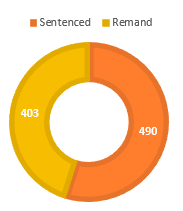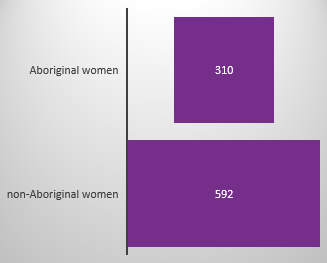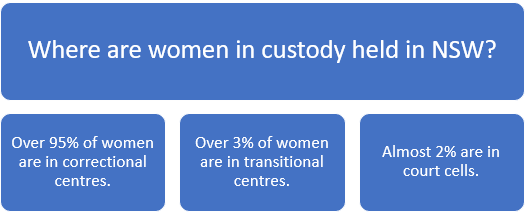Automatic language translation
Our website uses an automatic service to translate our content into different languages. These translations should be used as a guide only. See our Accessibility page for further information.
It is recognised internationally that while women constitute only a fraction of prison populations, they have needs that warrant specialised treatment and consideration. In Australia, our custodial environments and regimes need to be culturally safe and responsive to the needs of Aboriginal and Torres Strait Islander women.
A custodial environment that is responsive to the needs of imprisoned women challenges many traditional understandings of prison, including its physical design, staffing, daily routines, security assessments, access to family and the outside world and health service delivery. These gendered needs are reflected in the United Nations Rules for the Treatment of Women Prisoners and Non-custodial Measures for Women Offenders (‘The Bangkok Rules’). The Bangkok Rules were adopted by resolution of the UN General Assembly on 21 December 2010 and this year marks ten years since their adoption. You can read about the continued impact and significance of the Bangkok Rules and the work of other independent custodial oversight and monitoring bodies around the world from the Association for the Prevention of Torture’s website.

On 21 February 2021 there were 902 women in custody in NSW. This constitutes less than 7% of the total number of people held in custody by Corrective Services.
Legal status of women in custody
Women held in custody in NSW have an associated legal status that authorises their custody. The majority of women have either been sentenced to a term of imprisonment by the courts following a criminal conviction or have been remanded in custody and are awaiting the outcome of a criminal process.

The pie chart above shows the distribution of women in custody who are sentenced and who are being held on remand. Some women are also held in custody by Corrective Services NSW after NSW Police refuse their bail or when they are unable to meet bail condition/s. On 21 February 2021 there were 7 women in custody who held this legal status.
More than a third (310) of the women in custody in NSW are Aboriginal and Torres Strait Islander. Data from the Australian Bureau of Statistics indicates at 30 June 2020, 36% of the women in prison across Australia were Aboriginal and Torres Strait Islander. A full profile of women in NSW custody, with particular reference to women held in custody on remand, is available in our 2020 Women on Remand report.

Over 95% of women in custody in NSW are in correctional centres. There are 36 correctional centres in NSW and 13 of these accommodate women, even if it is only for a short transit period. Only three out of the 13 are designated as women's correctional centres. Otherwise, women are held in units or sectors within men’s correctional centres where their access to programs, services, and health care can be limited due to the competing demands from the majority male populations held.
We have made recommendations to improve the treatment and conditions of women held in correctional centres in the following reports:
- Inspection of Mary Wade Correctional Centre (2020)
- Programs, Employment and Education (2020)
- Women on Remand (2020)
- Prison Greens: The clothing and bedding in NSW (2017)
- Old and Inside (2015).
Just over 3% of women are held in custody in transitional centres. There are two transitional centres in NSW: Bolwara Transitional Centre and Parramatta Transitional Centre, both of which focus on supporting women to return to the community as they near the end of a custodial sentence. We have made a number of recommendations about the role of transitional centres and their operation in our 2020 report on the residential facilities.
Women are also held temporarily in 11 court cell complexes throughout NSW after they are received into the custody of Corrective Services NSW, from the NSW Police Force or from the courts. In 2019 we published a report on the 24-hr court cells and made several recommendations to address the needs of women being held in these locations.

In 2021 we are inspecting the Emu Plains Correctional Centre, which is a minimum-security women’s correctional centre in the greater Sydney area. Its focus is to provide employment services and programs to Aboriginal women, and to provide support to mothers in custody, including offering the only secure custodial location in NSW where a woman can reside with their child in custody. Once this inspection has been completed and our report has been published, you will be able to find a copy here.
After this, our focus will be on the planning of inspections of several other correctional centres where women are held, including:
Wellington Correctional Centre
Clarence Correctional Centre
Dillwynia Correctional Centre
Silverwater Women’s Correctional Centre
Mid North Coast Correctional Centre.
*Data relates to 21 February 2021 and is from the Corrective Services NSW Corrections Research Evaluation and Statistics Unit’s ‘Offender Population Report for the week ending 21 February 2021’.
11 May 2023
We acknowledge the traditional owners and custodians of the land on which we work and we pay respect to the Elders, past, present and future.